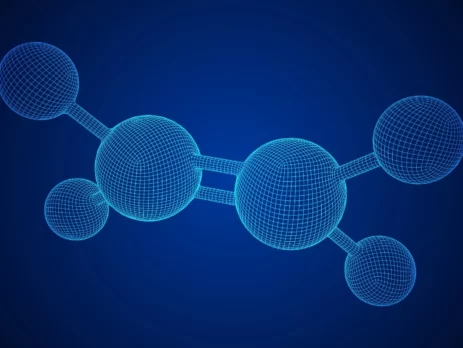Researchers Present Better Ways to Detect Ethylene Gas
Background
The simplest alkene, ethylene, is composed of two double-bonded carbon atoms and four hydrogen atoms. With an ambient air concentration of around 2 parts per billion (ppb), it can readily diffuse in the air.
One of the main precursors for rapid ozone generation in metropolitan settings is ethylene, which is formed in atmospheric chemistry from industrial emissions and vehicle exhausts. Thus, ethylene emissions that are not under control pose a major risk to human health by raising the level of ozone in the troposphere or at ground level. Exogenous ethylene can also metabolically transform into the mutagenic and cancer-causing compound ethylene oxide in the human body.
Endogenous ethylene can result in systemic development in the liver and/or bacterial generation of poisonous ethylene oxide, posing potential health hazards. It is therefore vitally necessary for the horticultural, agricultural, and healthcare industries to design and manufacture very selective, sensitive, and highly stable gas sensors that can conduct the real-time detection of sub-ppm or ppb concentrations of ethylene gas molecules. The concentration of a particular target gas in a complex gas combination can be detected using improved nanostructured sensing materials, according to reports. Although the tiny size, lack of polar chemical functionality, and limited physiochemical reactivity of ethylene gas make its detection at low concentrations difficult, nondestructive methods and chemical reaction techniques are currently being extensively and widely researched to accomplish this goal.
About the Study
In this study, the authors provided a thorough review of the most advanced ethylene gas detection technologies, ranging from gas chromatographic systems with preconcentrators to Fourier transform infrared technology (FTIR), photoacoustic and surface acoustic wave sensors, photonic crystal fiber-enhanced Raman spectroscopy, printable optically colorimetric sensor arrays, and a wide variety of nanostructured chemiresistive gas sensors including the potentiometric and amperometric-type field effect transistor, carbon nanotube and metal oxide-based sensors.
The team proposed a potential roadmap for the advancement of ethylene detection in the near future after a comprehensive discussion of the nanofabrication processes, operating circumstances, and sensing performance of various sensors/technologies.
The researchers examined and discussed recent developments in cutting-edge low-concentration ethylene gas detection technologies, their fabrication methods, operational settings, sensing mechanisms, performances, and corresponding limits of detection. A potential road map for the future development of highly sensitive and selective ethylene gas-sensing technologies was also suggested.
Observations
Due to ethylene gas’s significance to practically all production chains, detecting and monitoring its level was extremely crucial in the agriculture sector. In order to create a highly sensitive, portable, selective, reliable, cost-effective gas-sensing technology with low power consumption for ethylene gas detection, the great benefits of integrating multidisciplinary technologies should be stressed and given careful consideration.
With a low limit of detection of 2.3 ppb and a detectable concentration of a few tens of ppb, gas chromatography (GC), a mature and extensively used technology, could enable robust and reliable ethylene gas measurement. However, its primary shortcomings were its bulky size, inescapable moisture inference, expensive manufacture, and lengthy and complicated operating procedures, which severely restricted its on-site applicability for ethylene monitoring. The objectives for detecting ethylene gas on site could be greatly achieved by future efforts to transform the general GC for measuring multiple gases into a special tool for targeting the ethylene gas by the development and usage of highly selective, sensitive, and humidity-independent gas sensors.
Due to the possibility for the future ethylene-GC to consume less power and become more portable, efforts to build gas sensors that could operate at room temperature were particularly crucial. Also strongly encouraged was the continued optimization of pre-concentrator-based designs with the goal of streamlining the sampling procedure and shortening the time spent detecting gases. While FTIR and Raman spectroscopy techniques could quickly measure and detect numerous gases, their poor spectral resolution and low signal-to-noise ratio (SNR) restricted their ability to detect ethylene gas below the trace level.
Because water molecules frequently interfere with different ethylene gas-sensing technologies and sensors, such as PAS/QCM devices, GC/FTIR/Raman systems, and organic/inorganic chemiresistive gas sensors, it was crucial to develop and use effective moisture filters in order to achieve the objectives of accurate and on-site ethylene gas detection. High-performance ethylene-sensing technologies would continue to be developed using nanostructured chemiresistive gas sensors as the pioneers. Smaller nanostructured dimensions could improve the sensitivity to gas. Cu(I) complexes and noble and transition metal nanoparticles could concurrently improve sensitivity and selectivity for the detection of ethylene gas. Gas-sensing efficiency might be considerably improved by increment in the specific surface area and/or by making a highly porous microstructure.
Conclusions
In conclusion, this study discussed the most recent state-of-the-art, cutting-edge technologies/sensors for ethylene gas sensing/detection. The authors examined and evaluated a number of important characteristics, including operating conditions, fabrication method, response dynamic and speed, and limit of detection. They mentioned that future work on enhancing the SNR and achieving high spectral resolutions should be taken into consideration. Acoustic and quartz crystal microbalance (QCM) devices, which were examples of sensing technologies based on the piezoelectric effect, exhibited excellent ethylene gas detecting characteristics, including high accuracy, quick and tunable integration times for a desired minimum detection limit (MDL).
The team stated that the investigation of affordable substitutes for laser sources in acoustic configurations could substantially aid in their commercialization. Furthermore, including porous materials in QCM designs could increase their associated sensitivity to ethylene gas. Some metal oxide-based gas sensors could benefit from using secondary energy stimulators, such as bias, visible, ultraviolet (UV), infrared light, and mechanical energy.
